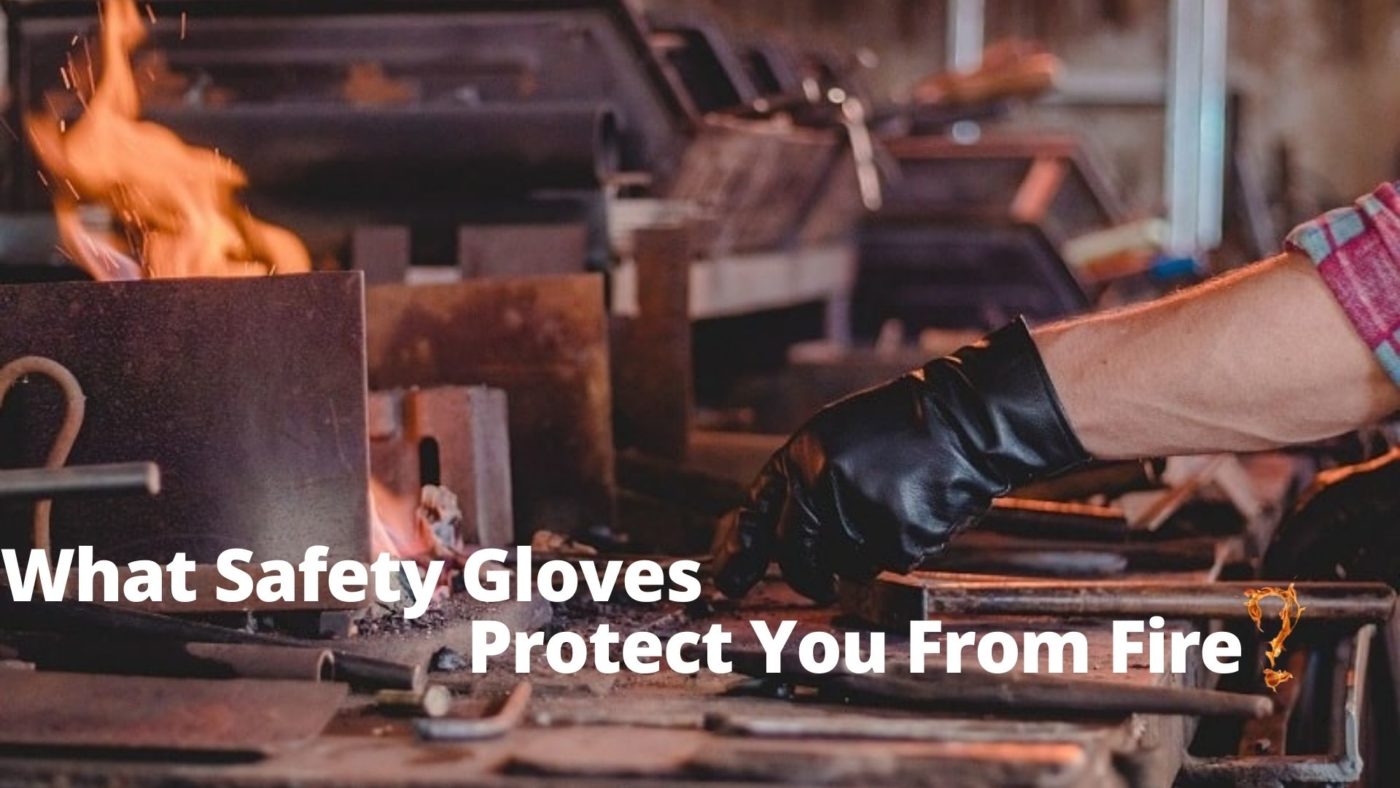Gloves
What Safety Gloves Protect You From Fire?
If you’re looking for safety gloves that protect against fire, you’ll need to know what the safety gloves are made of and how they’re tested. A few materials can protect your hands from heat up to 350°F (or 177°C). Nitrile or neoprene rubber is one option because they don’t melt at high temperatures. Leather, cotton fabric, and wool aren’t recommended because these materials will catch on fire!
Many people who work with power tools wear leather gloves while working so that their hands do not get burned. While this may seem like a good idea, in theory, it’s important to remember that leather catches on fire when heated over 185°F (85°C).
Wool is often used in high-temperature work because it’s one of the few natural materials that resist fire up to 600°F (315°C). However, wool can be damaged by heat from steam, so you should never wear these gloves if there is a possibility for contact. Wool gloves also have an unpleasant odor when heated and take longer than other fabrics to cool down.
The most popular safety glove option for handling hot objects or equipment is neoprene rubber tested at temperatures over 350°F (177°C) with no signs of melting. This material will do well against sparks and sharp edges as long as they’re not too close to your hand while working. Neoprene rubber is also inexpensive, and its weather resistance makes it a popular choice for large industrial uses.
The tradeoff of the gloves made from neoprene rubber is that they’re not as flexible or breathable when working in warmer environments. You will also need to take care not to get this material too wet since it has difficulty maintaining its elasticity and gripping ability when soaked, leading to injury if you accidentally touch something hot while wearing them.
If your work requires flexibility or protection against chemicals, then nitrile safety gloves are probably best suited for you because these materials won’t melt at any temperature under 392°F (200°C). Nitrile’s high-visibility color makes them easier to spot should they come off during an emergency, but they tend helpful when you’re working in low-light conditions.
The best gloves for you will depend on your needs, but the materials that all safety gloves need to be made from (regardless of their use) are usually woven fabrics such as cotton, nylon, or polyester. These fabrics dry quickly and offer protection against cuts and abrasions, which can happen when handling sharp edges, rough surfaces, or other cutting tools.
Difference between Neoprene and other Rubber
Neoprene’s durability and elasticity make it suitable for a variety of work environments. They are also good at resisting chemicals, oils, grease, heat up to 392°F (200°C), cold temperatures (-40°F/-40°C) or the most extreme conditions.
Neoprene is not as resistant to cuts and abrasions as other rubber gloves, so if you’re cutting something with sharp edges, then these would be best suited for high powered machinery instead.
Unlike latex which can become brittle in low light conditions, neoprene won’t lose its flexibility when there isn’t much visibility because they don’t absorb water quickly, making them less sensitive to changes in temperature. The disadvantage of this, though, is the cost. Other rubber gloves are considerably cheaper.
Neoprene is also known for its durability and elasticity. The natural flexibility of neoprene makes it an ideal glove to use in a variety of work environments. Additionally, they’re resistant to chemicals oils grease to heat to 392°F (200°C) and cold temperatures (-40°F/-40°C).
High quality neoprene doesn’t lose its strength or the shape of the fingers as quickly when worn due to its resistance against cuts and abrasions. In contrast, latex can become brittle after prolonged exposure to low light conditions, so these would be better suited for machinery with sharp edges rather than cutting anything else that’s more delicate.
How to select the best Heat Resistant Gloves for you?
When selecting the best gloves for working with fire, the critical thing to consider is your safety and what you want them to protect against.
You’ll also need to consider how much dexterity or manual control you require and any specific requirements such as chemical resistance, heat protection, cold weather performance, etc. For example – some types of glove material may melt on contact with certain substances, so be wary about that before purchasing anything!
When it comes down to choosing between neoprene latex rubber nitrile, cotton canvas polyester wool in terms of which is most appropriate according to their specifications, they’re all going to offer different comfort levels depending on the job at hand and individual preferences.
Primary Criteria for Choosing Fabric Heat Resistant Gloves
When choosing fabric gloves, the main criterion is heat resistance. You want to choose a material that will not melt or burn when exposed to high temperatures for an extended period. Typically this means using something like cotton canvas and neoprene rubber. Nitrile may also work well in some situations since it has similar properties as latex but without the allergy risk associated with natural rubber products.
Heat resistance– Gloves with heat resistance up to 932 degrees Fahrenheit is what you need.
The downside with heat-resistant gloves is that they are often expensive since the material used must be durable enough for it to last more than one use. It also negatively impacts some fabrics by making them shrink or stretch out of shape when exposed to intense heat over long periods.
Most people recommend using neoprene rubber safety gloves as these offer a balance between durability and affordability while still protecting against high temperatures. Plus, this type of fabric still retains its original size and elasticity, which means repeated usage won’t cause any issues like discoloration from prolonged exposure to sunlight or stretching due to tight-fitting conditions on the hands (obviously depending on how well made).
Price– Considering the cost of safety, gloves protect your hands and are a vital safety tool. You need to ensure they’re not going to break the bank.
Fabric– Pay close attention to this because different fabrics (or rather materials) offer varying levels of protection while handling hot surfaces. For it to be effective, look for something that’s made from neoprene rubber or cotton, as these materials are less likely to shrink or stretch when exposed over long periods. This is also important if you plan on using them more than once since prolonged exposure will result in discoloration due to ultraviolet radiation and stretching out, which would render them unfit for use.
Features– Since there are so many types available, consider features like adjustable straps with gloves, safety razor blade fingertips to protect your hands from cuts while handling sharp objects, and flexibility.

